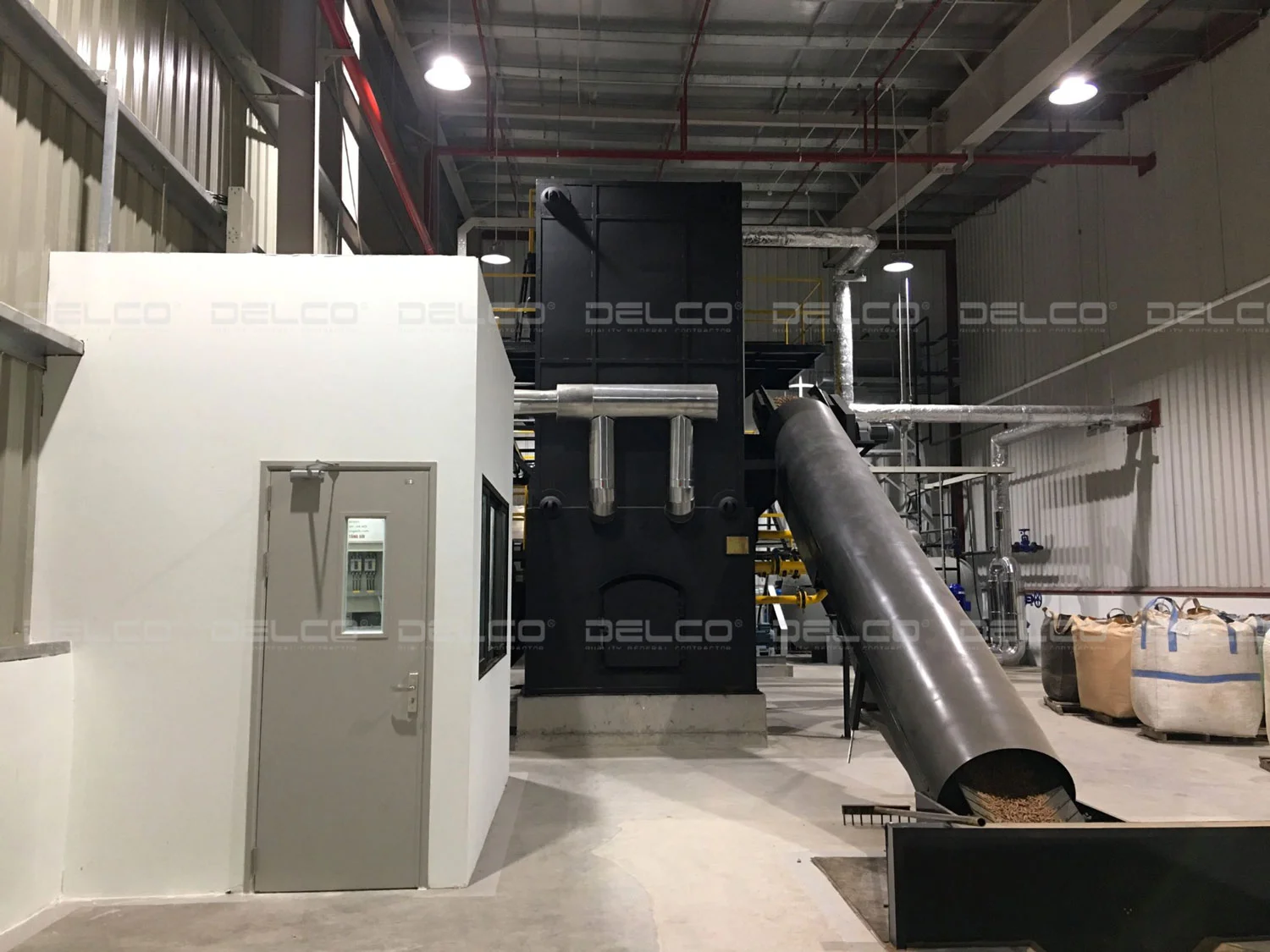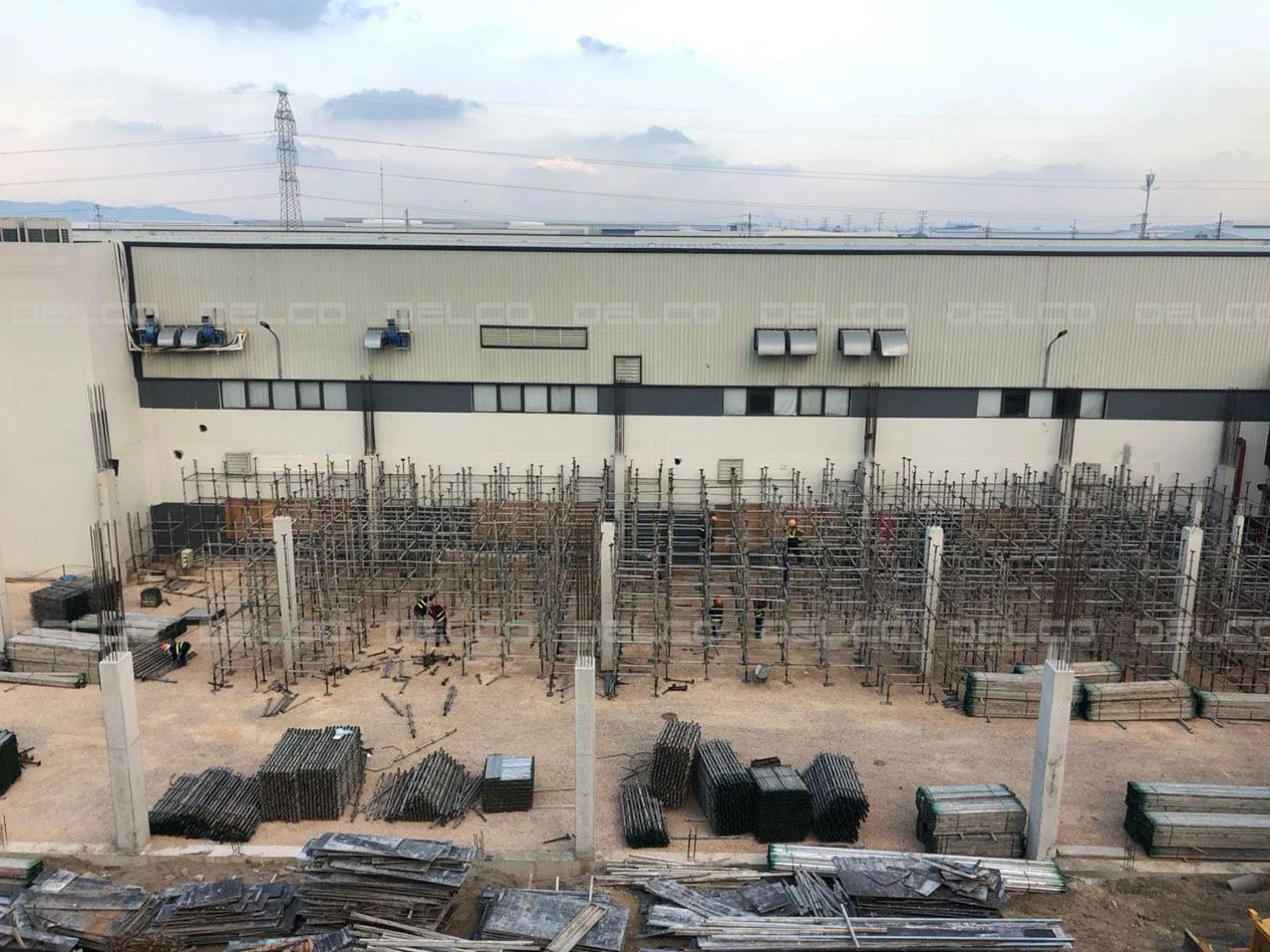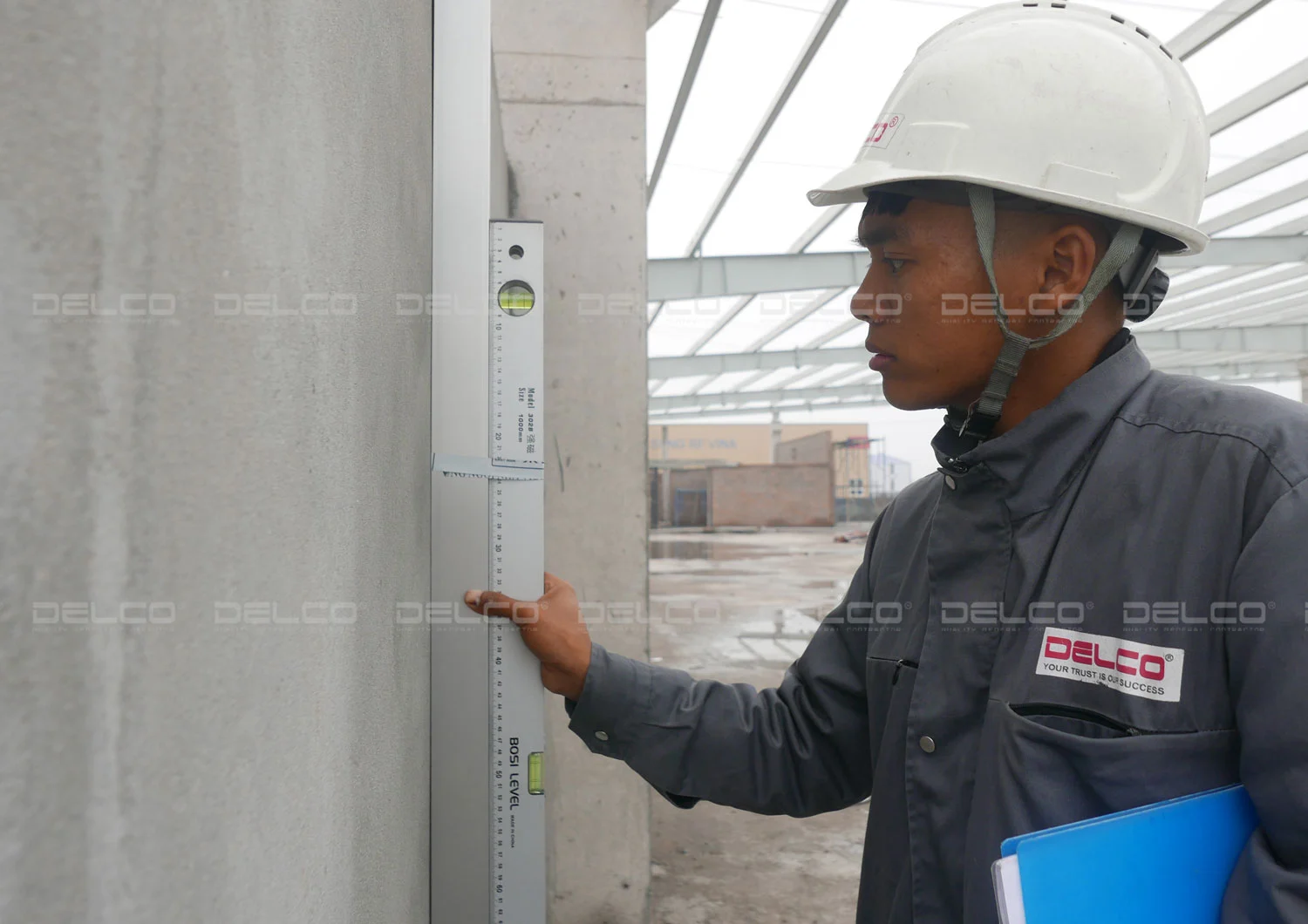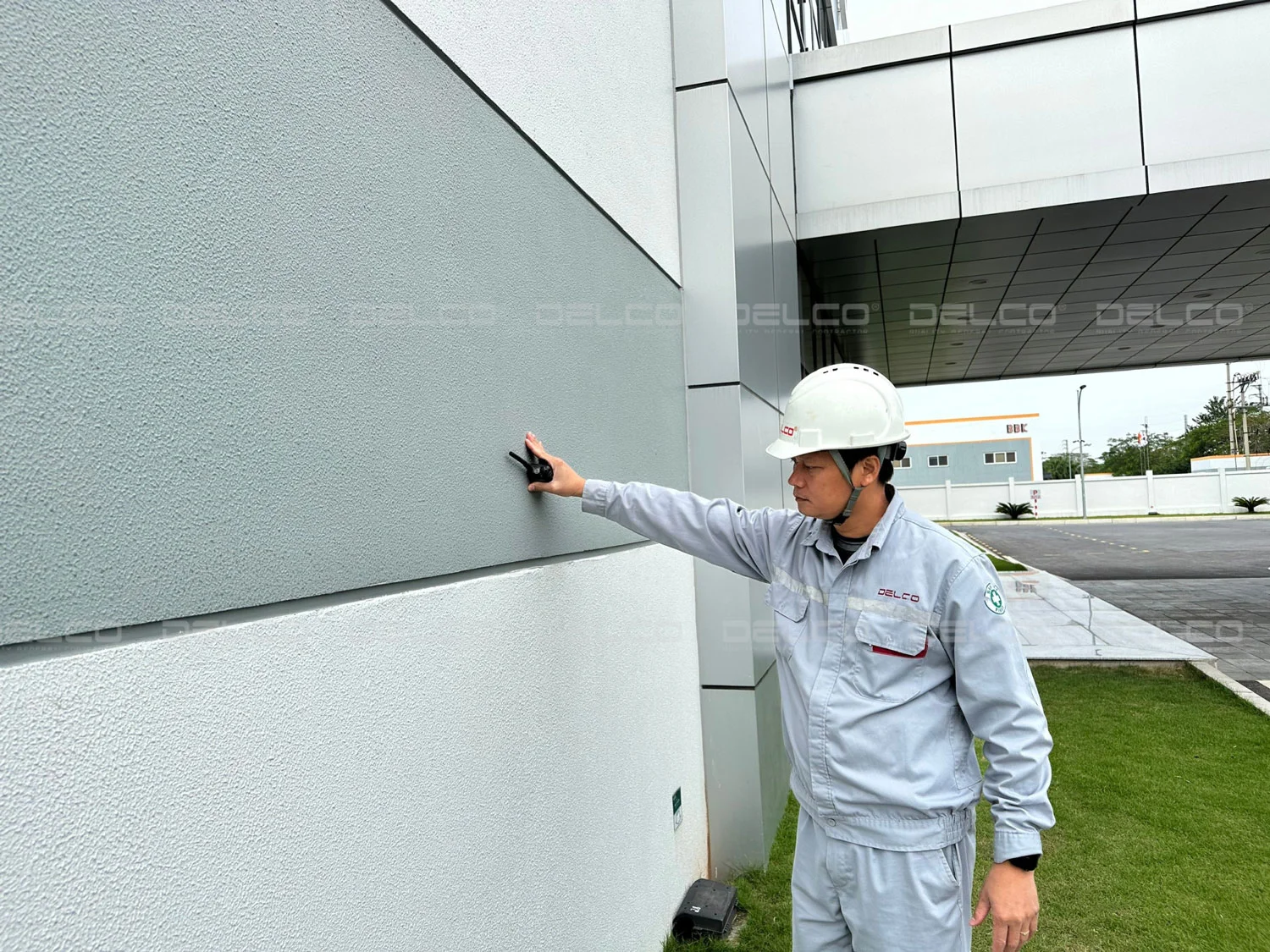To choose the right rental factory that meets production needs and complies with environmental regulations, investors should carefully assess factors such as water supply flow rate and quality, as well as the facility’s capacity to collect and treat wastewater, etc.
Check water flow rate and pressure before renting
It’s essential to assess the flow rate and pressure at the water supply point from the start, and compare it with the actual needs of the factory production process. This is especially important for industries that use large-scale machinery or systems requiring stable water pressure and volume, such as boiler operation or recirculating cooling systems.

Illustration: Boiler system at the DAINESE Vietnam factory fit-out project, by DELCO as Déign – Build contractor.
If the current specifications fall short, investors should consider upgrading the factory’s water system—such as installing pressure boosters or intermediate storage tanks—to ensure continuous and stable operations.
Assess water quality
Water quality is another critical factor to review when inspecting a rental factory. Investors should ask the property owner for periodic water testing reports to verify that the water meets at least the minimum standards for domestic use and production, and is safe for equipment operation.
In addition, many industrial systems, such as cooling towers and boilers, require pre-treated water before they can operate properly. Specialized industries like food processing, pharmaceuticals, electronics, and semiconductors have even stricter water quality requirements. Investors might consider installing additional treatment systems to protect machinery and ensure product quality—such as water softeners to reduce hardness, pre-filters, activated carbon filters to remove impurities, or RO (reverse osmosis) systems for producing ultra-pure water. If the water quality is not up to standard, investors should plan for system upgrades or repairs to meet production needs.
Inspect wastewater and stormwater drainage systems
An effective drainage system is essential for maintaining a clean, safe production environment. It’s important to check that the facility has sufficient manholes, trash screens, and grease traps. Wastewater from production, domestic use, and stormwater must be collected through separate pipelines to avoid cross-contamination.
For stormwater systems, it’s important to inspect the yard’s surface slope, drainage channels, and manholes to ensure quick water runoff and minimize the risk of flooding during the rainy season.
Wastewater treatment system must meet environmental regulations
One of the most critical factors when inspecting a rental factory is determining whether the facility has its own wastewater treatment plant or relies on a shared treatment system in the industrial park. It’s also important to check the level of investment in the existing system, its design capacity, and whether it can consistently treat wastewater to meet discharge standards. In addition, investors should carefully review the industrial park’s specific wastewater discharge requirements.

Most industrial parks require that wastewater must meet Column B or B+ standards under QCVN 40:2011/BTNMT before it is released into the shared system. (Illustration)
If the current wastewater quality does not meet the requirements, investors should consider upgrading or adding an on-site treatment system. However, since rental factories often fully utilize their allowed construction density, any additional infrastructure must be carefully planned. Choosing the right fit-out solution is essential to ensure compliance without disrupting operations.
If installing an on-site system isn’t feasible, signing a service contract with an external licensed wastewater collection and treatment company may be another option to meet environmental regulations.
See more: Key considerations for electrical system installation during rental factory fit-out
See more: Key changes in factory fitout in 2025
See more: 4 criteria to help investors choose the optimal factory fit-out plan for 2025






